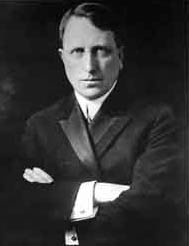Mary Wollstonecraft

Mary Wollstonecraft was a feminist born in the eighteen century. She was a romantic, which implies that she was obsessed with the idea of human nature like her fellows Rousseau and Hobbes. She believed that women were considered inferior because of their physical nature (physically weaker than men).
She strongly rejected the system of education of the time which was based on Aristotle’s doctrine: he considered than women were a different/inferior specie to men, and that they had no role in reproduction. He also believed that some people are naturally slaves and it would be cruel to make slaves free as it’s in their nature to be slaves. Therefore it’s in women’s nature to be directed by men. Romantics have reacted against this misogynist conception.
Mary W. believed in the potential of education – she believed that education could free women from their status of slave.
Mary W. had a relation of love/hatred with Rousseau: she found his ideas inspirational but she disagreed with his views on women. Indeed, he believed that women’s duty was to please men.
A Vindication of the Rights of Woman is her most popular work. In this book, she was very critical towards women, she blamed then for letting themselves fall in their current status. With this work she wanted to show that women are human beings and that there should be no difference between men and women in the public sphere – they should have the same rights and the same ambitions. Gender isn’t relevant, it only limits women’s potential. The role of education is to change women’s view on the role society gave them.
Epistemology – Kant and Keats
Epistemology means philosophy of knowledge: how can we be certain about what we know.
Noumenal: parallel worlds that could exist outside our own perception. It also mean things in themselves, they don’t need people’s perception to exist. World beyond ordinary perception.
Phenomenal: An object becomes a phenomena when it is observed by somebody. This implies that objects have a dual nature, they are different depending on the possibility that somebody observes them or not.
John Keats was a poet from the romantic period. He was interested in noumenal. In the Ode on a Grecian Urn, he stated that beauty is truth. To understand this statement, we need to understand what he believed. The aesthetic response someone gets when he/she sees something really beautiful (subjectively) is a feeling that proves the existence of a noumenal world – this emotional feeling is a kind of communication with the noumenal world. Hence: beauty is truth.
Kant believed that the Universe was divided in two parts – noumenal and phenomenal.
Logic
Axiom: true fact by definition, beyond any doubt. It comes from Euclidian geometry.
Aristotle had a deductive logic: he invented the syllogism. The starting point of a syllogism is an axiom > All men are mortal. Socrates is a man. Therefore Socrates is mortal. A syllogism derives the conclusion from the original premise.
A priori: knowledge known without experience: “I think therefore I am.” from Descartes. You cannot check this fact. Hume says that any a priori knowledge is impossible; Locke believed that men are born with a “blank slate”.
A posteriori: it is the opposite of a priori; it means that knowledge comes from experience. Empiricist and materialist philosophers approach philosophy on knowledge that comes from experience.
Induction or synthetic logic: the conclusion is not contained in the axiom: it is necessary to add external knowledge to come to a conclusion. Scientists use this kind of logic. Before there was any scientific evidence about the Sun, Hume believed that we could never be sure than the Sun would rise/set because there was no evidence that it would happen again. He was a sceptical towards truth.
Materialism and idealism
Materialism: the theory holds that the world is made of sensitive matter.
Idealism: the theory holds that everything you see is only happening in your mind, it is a phenomena. The question of the tree falling in a forest: is it making a noise or not? Idealist philosophers would say not, because nobody is around to hear it.
Hegel was an idealist, he believed that everything was spirit – idea of Geist. He was a teleological philosopher, which means that he believed that everything has a purpose. The world is evolving towards a perfect society, and all the events that happened during History were necessary to achieve it.
Marx was a materialist, he believed that ideas have a material effects.
Development of newspapers and periodicals
Newspapers have developed between 1815 (roughly the end of Napoleonic wars) and 1915 (beginning of the First World War). This is the century where the world has become as we know it today.
Economy: the economy was evolving with liberalism and free trade. It was the golden age of capitalism.
Demography: people migrated towards the cities (urbanisation), the cities became crowded. This was a new market for newspapers: people were closer; it was then easier to sell them. Everybody was affected by the same problems and they also talked the same language.
Technology: 1830s: steam-driven press: it allowed a massive production of newspapers is a small amount of time.
Railway train: it allowed faster distribution
1860s: telegraph wire: allowed news to be transmitted on the same day.
Sociological: in
Political: the fact that there were no taxes and no censorship was great for newspapers, they could print what they wanted and they didn’t have to pay money for it.


